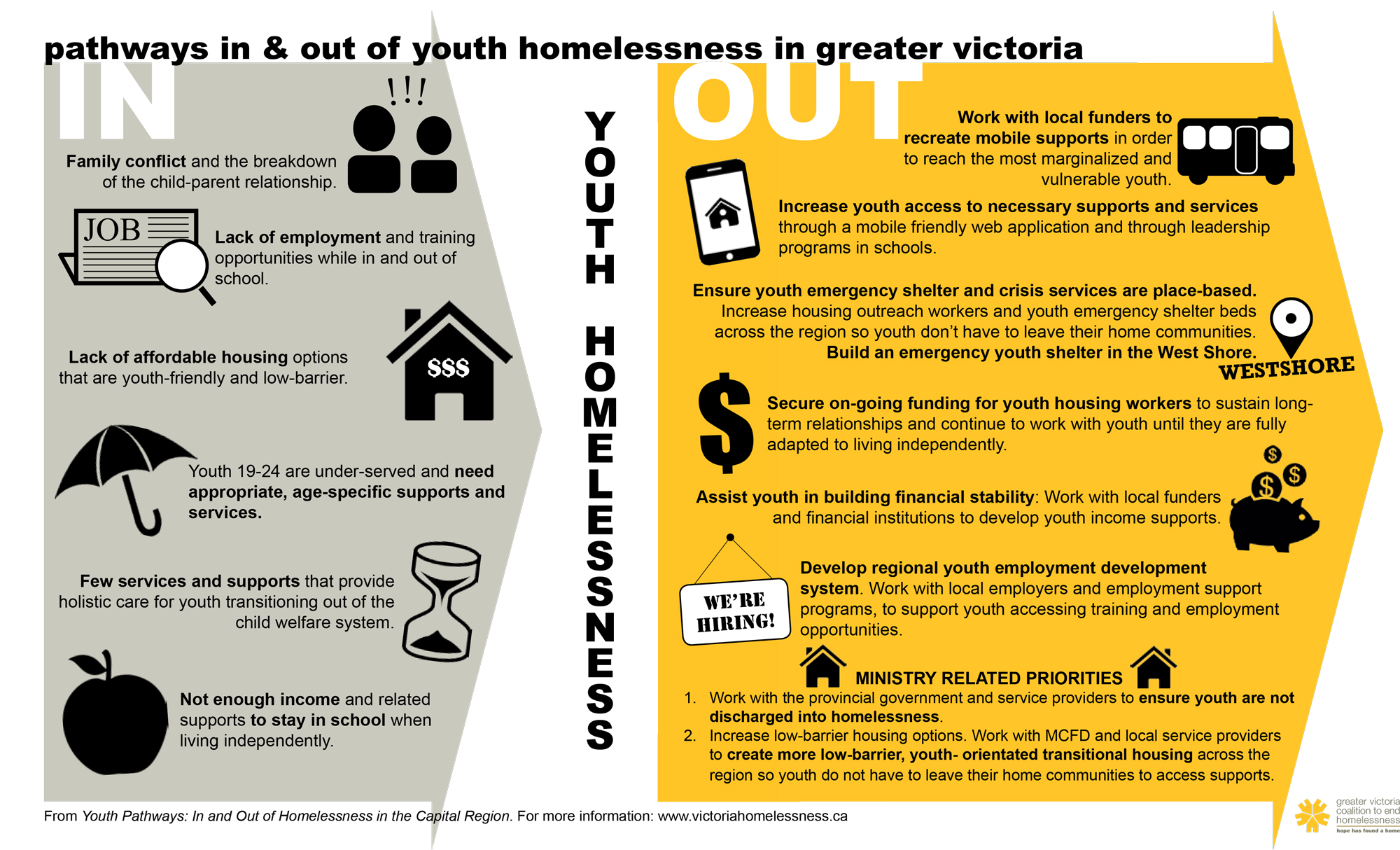The below infographic, published by the Greater Victoria Coalition to End Homelessness as part of their recent report, takes a look at pathways in and out of youth homelessness.
Pathways Into Youth Homelessness
The pathways into homelessness for youth are varied. A major push factor (mentioned in this infographic) is the violence and discrimination youth may be facing at home. A high number of LGBQT2 youth leave home for just this reason. Many of these youth relocate to major urban centers like Toronto in the hopes that they will be able to find the services and supports they need. Unfortunately, specialized services for homeless LGBQT2 youth, even in large cities like Toronto are few and far between.
Trauma is also a common experience for many youth before and after becoming homeless. If they find themselves living on the streets, youth are at increased risk of experiencing further trauma. Living on the streets is directly linked to increased risk of witnessing and being victims of physical and sexual violence. The longer a youth is homeless, the greater the likelihood of further physical and emotional harm. As a result, many youth turn to substance use (and abuse) as a coping mechanism to deal with stressors associated with living on the streets. Homelessnesss is an independent predictor of injection drug use among street-involved youth.
Finally, some youth may find themselves living in homelessness because of the high cost of rental housing. The cost of housing has spiked in recent years, and this rise in the cost of rent has not been accompanied by a similar growth in affordable housing.
Pathways Out of Youth Homelessness
Factors involved in the pathway to youth homelessness tend to be based on the unique circumstances faced by different individuals. Accordingly, we are unlikely to find one quick-stop solution, or support, that can put an end to youth homelessness, as this infographic indicates. When we consider the scope of the problem, it can be difficult to know where to start.
Fortunately, there has already been a great deal of research documenting what steps can be taken to help youth living in homelessness. For starters, it should be understood that youth living in homelessness have similar needs and goals as youth not living in homelessness. Accordingly, there should be a visible difference in how services and supports are designed and delivered for youth living in homelessness compared to adults living in homelessness. Providing specialized supports, tailored to the needs of youth, is a step in the right direction.
Preventing Youth Homelessness
Early interventions – not directly outlined in this infographic – should be considered when discussing pathways in and out of homelessness for youth. It can be understood as a preventative measure against chronic homelessness, and as a means to protect youth entering homeless from the serious dangers that come with living on the streets, before they get there. The current lack of early intervention programs for youth just entering homelessness has harmful implications for the long-term health and well being of these youth.
Factors like trauma and family breakdown have been identified as precursors to homelessness, but it is not necessary for these youth to become homeless in order for their needs to be addressed in these situations. Preventive approaches to youth homelessness have been undertaken in the United Kingdom and Australia to great effect. In some situations, these programs have looked to prevent breakdown in familial relationships. In others, where a youth may experience abuse and trauma in the home, these programs have looked to help transition young people into living situations that have built-in supports.


